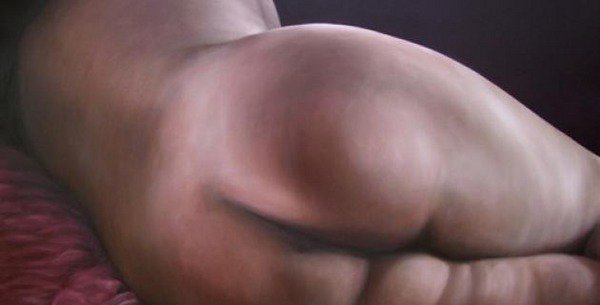Two exhibitions
dal 10/9/2012 al 29/9/2012
Segnalato da
10/9/2012
Two exhibitions
Kznsa Gallery, Durban
Heather Gourlay-Conyngham's exhibition develops her abiding interest in the human body. Lanel Van Vuuren's Absentia use death as a strategy to construct images that gives symbolic clues or traces to associate it with the manner in which the subject died and represents the lived presence of the individual's identity amidst material possessions.

Heather Gourlay-Conyngham
Unfoldings
Presently on exhibition at the Tatham Art Gallery in Pietermaritzburg is ‘Unfoldings’ – a mid-career retrospective by KZN artist Heather Gourlay-Conyngham. The artist presents an extension of this important exhibition in the KZNSA Main Gallery. Notably this exhibition develops her abiding interest in the human body, only here the figures are uniformly naked!
The KZNSA exhibition presents recent work. Dr Juliette Leeb-du Toit notes in her catalogue essay...As with many other woman artists with remunerated employment - in Gourlay-Conyngham’s case, teaching - in addition to parenting and homemaking, her commitments have resulted in a smaller body of work than if she had been a full-time artist, which she has recently become. Her work reflects on several rites of passage as she repositions her role as wife and mother, and begins again to centre her creativity and persona, addressing issues of femininity, self-embodiment, intimacy, difference, ageing and becoming…
…The female body, one of the main themes in Gourlay-Conyngham’s work, has for millennia been the domain of male artist-interpreters. Aspirant woman artists at academies in Europe were first allowed to depict the nude female form only in the late 19th century, winning this right in tandem with attempts to acquire civil and political rights. Contested for over a century, women’s right to represent themselves remains central to the feminist agenda and has in recent years assumed a strong political aspect…Many of Gourlay-Conyngham’s works focus on the female subject, challenging stereotypical perceptions associated with the eroticized male gaze.
Excerpt from exhibition catalogue foreword by photographer David Goldblatt.
Let me say naively, foolishly, recklessly, Paul Delaroche was not so much wrong as over-emphatic when, after seeing a daguerreotype for the first time in 1839, he is said to have declared, ‘From today painting is dead’. He was wrong, but given the richness and expressive possibilities of photography, I do wonder occasionally, why some painters still paint. Having regard to this view, you might well ask why I am writing a foreword to a painter’s catalogue.
Quite simply because I am intrigued and entranced by Heather Gourlay-Conyngham’s particular ways with reality. Her paintings are increasingly rooted in a very high degree of faithful reciprocity with external reality and yet in some for me indefinable way they are painterly, not photographic. Knowing very little about painting I will risk my ignorant neck by saying that this way of working has nothing to do with setting up a style or with following or not following a trend. This is not about hyperrealism or any other painter’s fad, it is about finding and exploring ways of expressing her own relationship with reality, the reality that she lives.
-----
Lanel Van Vuuren
In Absentia
It is the awareness of the death of an individual that creates a tangible sense of absence in the photographic portraits that have been constructed for the series In Absentia (2011 - 2012). At the start of this project, the images were single representations of a moment in time that had led to an individual’s death. This project used death as a strategy to construct images that gives symbolic clues or traces to associate it with the manner in which the subject died and represents the lived presence of the individual’s identity amidst material possessions.
It is important to mention that the artist wasn't necessarily interested in exploring the concept of death; her work was, rather, inspired by artists like Duane Michals and Francesca Woodman and the manner in which they dealt with these themes in their work. Michals stated that the artist had to go beyond what the camera lens sees in order to deal with phenomena such as chance and death. Van Vuuren states that “this challenged me to describe the physical appearance of the spaces around me in a similar fashion. My aim was to describe the invisible and intangible world within my imagination.”
The images are constructed stories that are used to express / represent the artist’s immediate environment. Van Vuuren only used personal objects and relevant locations in order to stay as true to her experienced reality as was possible. The creation of this fictional world, therefore, deals with issues that concerned the artist directly. These portraits can be read as an artistic rebellion against the traditional criteria for a photographic portrait – it creates an artificial world with the sitter absent and it includes themes such as death and various outsiders. These outsiders function as the catalysts of an expanded personal portrait since the spaces we inhabit and the objects we place within these spaces suggest who we are.
Inaugurazione 11 settembre
KZNSA - KwaZulu Natal Society of Arts
166 Bulwer Road, Glenwood, Durban



